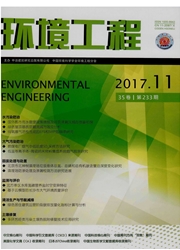

 中文摘要:
中文摘要:
本文考察了乙醇预发酵对餐厨垃圾甲烷发酵动力学的影响,并探讨了预发酵产生的乙醇作为甲烷发酵底物—“缓释乙酸”的可能性。结果表明,与一级动力学模型相比,修正Gompertz模型更适合餐厨垃圾复杂底物的厌氧发酵体系。预发酵组最大产甲烷速率Rm比对照组高2.22倍,且T80和产气停滞期λ比对照组分别减少了1.67 d和0.64 d,表明乙醇预发酵可加快甲烷发酵的启动、显著提高底物降解速率和产甲烷速率。单一碳源(乙醇、乙酸)的厌氧消化实验中,累积甲烷产率由高到低的顺序为:乙醇组(372m L)〉乙酸组(155m L)〉对照组(62m L),乙醇预发酵不仅可防止酸化,还能使乙醇起到“缓释乙酸”的作用,为甲烷菌提供足够的底物,从而显著提高餐厨垃圾甲烷发酵系统的稳定性。
 英文摘要:
英文摘要:
Using the construction waste, namely fly ash brick, as the absorbing material, the purification effect on phosphorus in water by fly ash brick power ( shortened as FABP) modified by sulphuric acid and hydrochloric acid was studies. The surface area of FABP modified with acid was significantly increased. In addition to the superficial characteristics, the effect of acid types, dosage, contact time, pH on phosphorus-removing rate were also studied, which showed that sulfuric acid modified fly ash brick powder (shortened as S-FABP) had a good phosphorus-removing effect in water. When the dosage was 3.0 g, the phosphorus-removing rate could reach 98.5% and most of the phosphorus was removed within the first 5 minutes in reaction. From the experiment, it could be inferred that the mechanism of phosphorus removal by S-FABP was a combined result of precipitation reaction and absorption reaction. Different precipitation reactions happened under acid and alkaline conditions. According to the fit result of Langmuir and Freundlich equation, the isothermal absorption model of S-FABP on phosphorus conformed to Langmuir model, whose theoretical saturated adsorption amount was 7.69 mg/g.
 同期刊论文项目
同期刊论文项目
 同项目期刊论文
同项目期刊论文
 期刊信息
期刊信息
